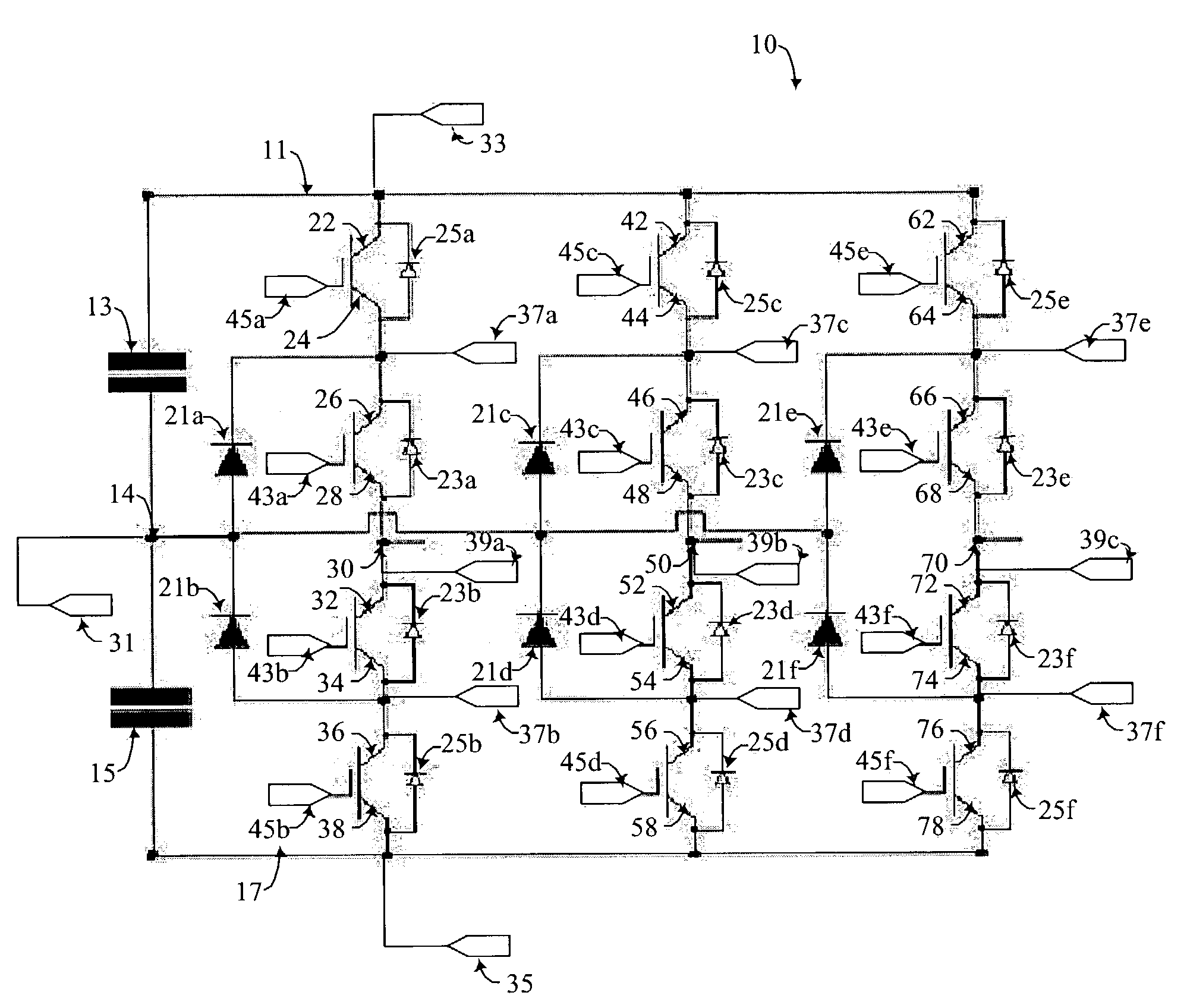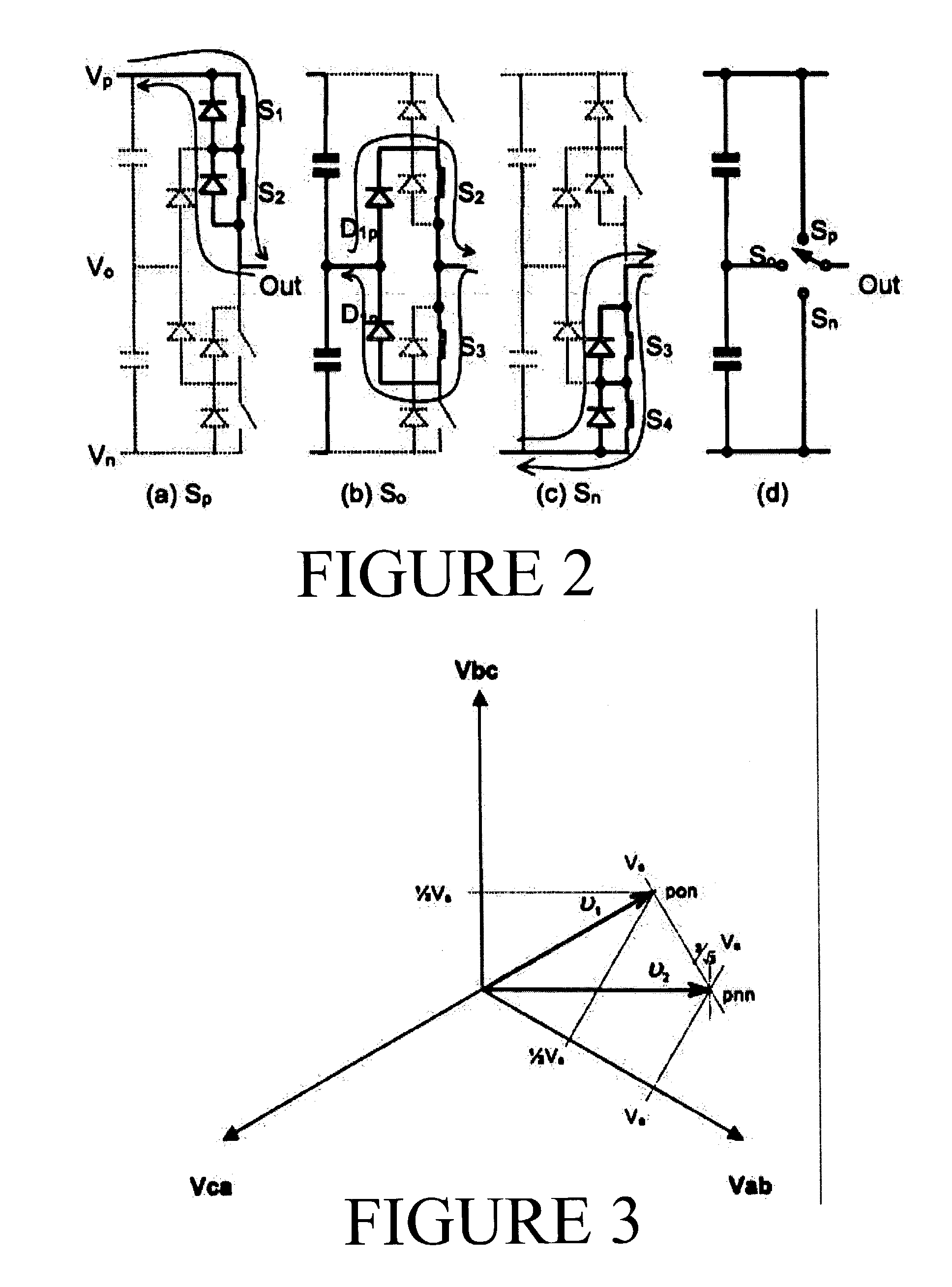Fault-tolerant three-level inverter
a three-level inverter, fault-tolerant technology, applied in the direction of dc-ac conversion without reversal, emergency protective circuit arrangement, automatic disconnection emergency protective arrangement, etc., can solve the problem of driving motor to impart an unequal torque to the flywheel, add to the price of the inverter, and accumulate charge at the mid-point between the two dc linking capacitors
- Summary
- Abstract
- Description
- Claims
- Application Information
AI Technical Summary
Benefits of technology
Problems solved by technology
Method used
Image
Examples
Embodiment Construction
[0027]By way of overview, a method for driving a neutral point clamped three-level inverter is provided. In one exemplary embodiment, DC current is received at a neutral point-clamped three-level inverter. The inverter has a plurality of nodes including first, second and third output nodes. The inverter also has a plurality of switches. Faults are checked for in the inverter and predetermined switches are automatically activated responsive to a detected fault such that three-phase electrical power is provided at the output nodes.
[0028]Referring to FIG. 1 DC linking capacitors 13 and 15 are connected in series and separate a positive DC bus node 11 from a negative DC bus node 17. The capacitors 13 and 15 define a neutral point 14 between the capacitors 13 and 15 that is capable of accepting and storing either positive or negative charge. The neutral point 14 allows the inverter to treat the DC bus nodes 11 and 17 as though there were two equal DC sources connected in series defining ...
PUM
 Login to View More
Login to View More Abstract
Description
Claims
Application Information
 Login to View More
Login to View More - R&D
- Intellectual Property
- Life Sciences
- Materials
- Tech Scout
- Unparalleled Data Quality
- Higher Quality Content
- 60% Fewer Hallucinations
Browse by: Latest US Patents, China's latest patents, Technical Efficacy Thesaurus, Application Domain, Technology Topic, Popular Technical Reports.
© 2025 PatSnap. All rights reserved.Legal|Privacy policy|Modern Slavery Act Transparency Statement|Sitemap|About US| Contact US: help@patsnap.com



